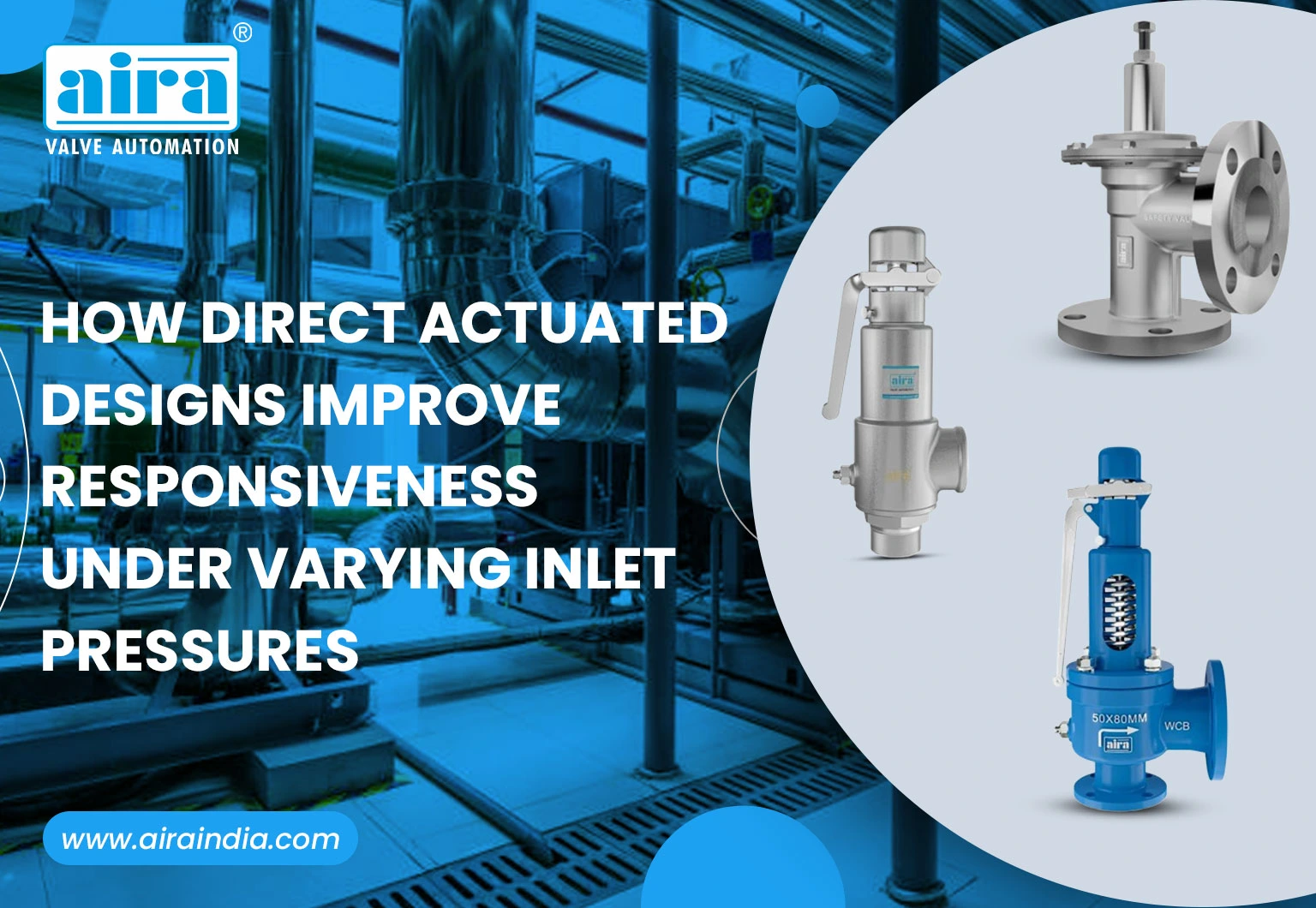In industrial operations, inlet pressure within pipelines can quickly disturb the stability of the ups and downs, leading to inconsistent performance and operational disability. Increasing uncontrolled pressure causes serious risks such as equipment damage, expensive downtime, and even safety risks for workers and facilities. This is where a reliable PRV (pressure relief valve) becomes inconceivable. Among the various options, Direct-Actuated industrial PRV design stands out for its ability to give an immediate and accurate response, ensuring smooth operations and long-term reliability in various industrial applications.
Understanding Direct Actuated Mechanisms
The Direct-Actuated PRV (pressure relief valve) is designed to respond to the system pressure setting range. Unlike pilot-operated valves, which depend on an external pilot mechanism and might cause delays due to variations in the inlet state, Direct-Actuated PRVs respond immediately. Their structure remains incredibly effective, with a spring, diaphragm, or piston directly controlling valve movement.
When the pressure exceeds the set point, the spring force falls and the valve opens promptly to relieve excess pressure. This rapid reaction provides equipment safety, stable operations, and reliable performance even in a high-pressure environment. For sectors that require accuracy and security, a Direct-Actuated PRV offers unparalleled responsibility.
Benefits of Direct Actuated PRVs under Varying Inlet Pressures:
One of the major benefits of a Direct-Actuated PRV (pressure relief valve) is the ability to provide a rapid response, which prevents sudden pressure spikes from damaging important components such as pipelines, pumps, and valves. This makes them highly reliable for ups and downs in industrial processes associated with steam, gas, or liquid systems. By acting as a responsible pressure valve, they help maintain frequent operating conditions, reducing the cost of disadvantaged and maintenance.
Also read, How Pressure Release Mechanisms Prevent Breakdowns and Downtime
Improvement in the result is the system efficiency, increased safety, and constant performance. General applications include chemical processing plants, HVAC systems, and high-pressure water lines, where accurate and immediate pressure relief is necessary. For such a demanding environment, a direct active industrial PRV provides reliability and peace of mind.
Key Design Features that Enhance Responsiveness
The efficiency of a Direct-Actuated PRV (pressure relief valve) lies in its thoughtful engineering design. Customized spring stress ensures accurate setpoint control, while a compact, mild structure enables rapid opening and closing during pressure growth. Low hysterisis further enhanced the performance by reducing the delay in relief from pressure, ensuring immediate safety.
Built with corrosion-resistant materials, these valves maintain stability and reliability even in rigorous industrial conditions. Together, these features enable Direct-Actuated PRV to provide consistent, responsible security under separate inlet pressures, making it a significant protection for industrial systems that demand accuracy and security.
Selecting the Right PRV for Your Industrial Application
The efficiency of a Direct-Actuated PRV (pressure relief valve) lies in its thoughtful engineering design. Customized spring stress ensures accurate setpoint control, while a compact, mild structure enables rapid opening and closing during pressure growth. Low hysterisis further enhanced the performance by reducing the delay in relief from pressure, ensuring immediate safety. Built with corrosion-resistant materials, these valves maintain stability and reliability even in rigorous industrial conditions. Together, these features enable Direct-Actuated PRV to provide consistent, reliable security under varying inlet pressures, making it a significant protection for industrial systems that demand accuracy and security.
Maintenance Considerations for Maximum Reliability
To ensure long-term efficiency, each PRV (pressure relief valve) requires regular maintenance. For a Direct-Actuated PRV, spring stress and periodic inspection of the diaphragm or piston position is required to preserve accountability. Performing tests under separate inlet pressures helps verify that the valve reacts quickly and accurately when needed. Cleaning and renovation also play an important role in maintaining accurate setpoints. By following these practices, an industrial pressure valve not only expands its service life but also reduces the risk of unplanned shutdowns, keeping industrial operations safe, stable, and skilled.
Conclusion
In modern industries, ups and downs demand a rapid and reliable solution. A Direct-Actuated PRV (pressure relief valve) increases accountability by providing immediate pressure relief, protecting, and ensuring uninterrupted operations. By selecting the right industrial PRV, businesses get both operational benefits and better security. Aira Euro Automation provides an advanced PRV solution designed for accuracy, durability, and long-term performance.
